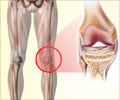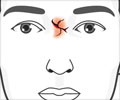Women who take commonly prescribed drugs for osteoporosis known as bisphosphonates for five years or more may be at higher risk of certain kinds of fractures of their thigh bone

Typical hip fractures caused by osteoporosis occur in the upper part of the femur close to the hip joint and are an important cause of disability, need for long-term care and even death in the elderly. The risk of these kinds of fractures is reduced by bisphosphonate treatment, which was confirmed by this study.
But the study found that less common fractures lower down from the hip and closer to the middle of the femur -sometimes called "atypical" or "unusual" fractures-occurred more than 2.5 times as often in women who had taken bisphosphonates for more than five years than short-term users of the drug.
"Prolonged use of bisphosphonates is associated with rare and unusual fractures of the femur," said the lead author, Laura Park-Wyllie, a pharmaceutical safety and outcomes researcher at St. Michael's. "But the proven benefit of these drugs for the much more common fractures of osteoporosis usually outweighs the harm, especially in the initial years of treatment for osteoporosis. Women with osteoporosis, at high risk for osteoporotic fractures, should not stop taking bisphosphonate therapy because of the small risk of these thigh fractures."
Park-Wyllie said the study was prompted by an increasing number of reports of thigh bone fractures among older women who have taken the drugs sold as Fosamax, Actonel or Didrocal for five years or more and by conflicting findings from small, observational studies.
The St. Michael's-ICES study is the largest assessment of the issue to date. The researchers identified 205,466 women over age 68 who had been prescribed bisphosphonates between 2002 and 2008.
"Our study estimated that the risk of fractures to the femur was 0.13 per cent for women entering their sixth year on the drug - or just over one in 1,000," Park-Wyllie said. "Use of bisphosphonates for less than five years was not associated with a significant risk of thigh fractures."
The study has been published in the Journal of the American Medical Association (JAMA).
Source-ANI
 MEDINDIA
MEDINDIA



 Email
Email










